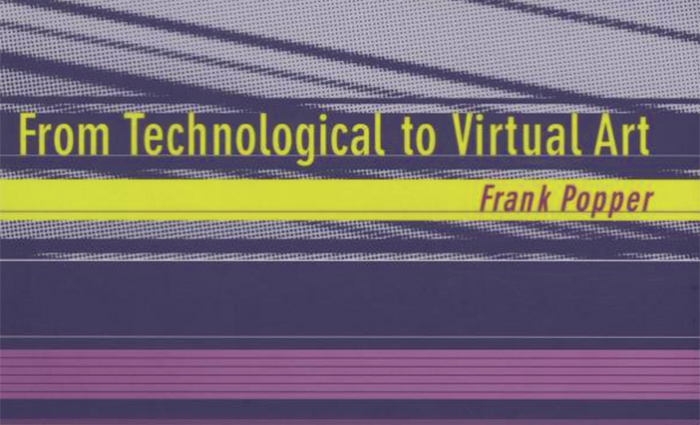Channeling New Media
By Oliver Grau, Steve Dixon, Frank Popper
reviewed by Robert Atkins
Excerpted from review:
The humanism that Popper sees in virtual art he also wears on his sleeve, expressing it through the unusually detailed attention he pays to artists’ lives and art. (Like Grau and Dixon, he begins with a broad-brush account of a century of art history that establishes the pedigree of his contemporary subject.) Compare his three-page treatment of Orlan—the well-known French artist who for years “sculpted” her face and body by cosmetic surgeries that she transmitted via closed circuit from the operating room—with Dixon’s few, impersonal paragraphs. Although celebrity culture can make many biographical approaches seem suspect, information about Orlan’s pre-op appearance, say, is highly relevant in the context of her shape-shifting performance procedures.
Other contemporary artists featured in Virtual Art include Mark Amerika, Toni Dove, Ken Goldberg, Eduardo Kac, Stelarc and Adrianne Wortzel. Are their projects more ethically elevated or socially engaged than those of their non-virtual art peers? Trying to persuade us that their ethical standards or humanistic impulses can be clearly discerned, much less evaluated, complicates the task Popper has set for himself. If he doesn’t always succeed, his word portraits are often both striking and finely rendered, illustrating the lifelong journey we make to connect ourselves with the world. Pointing out the signposts along the way, Popper suggests, remains the artist’s proper concern.
Robert Atkins is the co-editor (with Svetlana Mintcheva) of the anthology Censoring Culture: Contemporary Threats to Free Expression (New Press, 2006).


